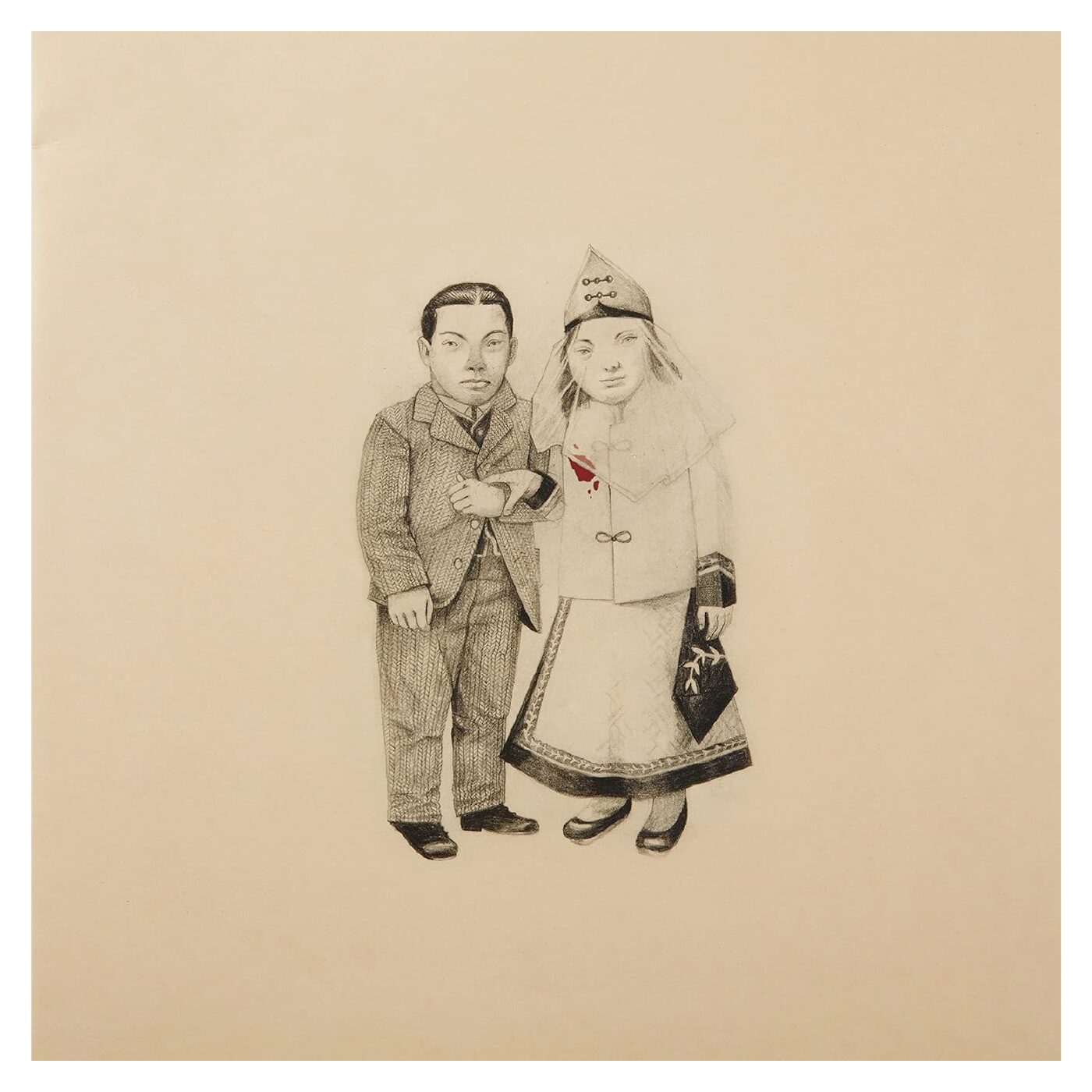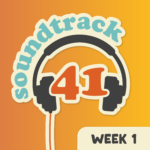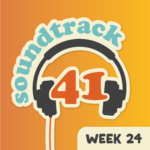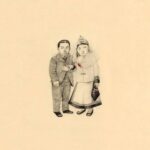Retro Review: The Decemberists – The Crane Wife
he Decemberists will always have a special place in my heart when it comes to early 2000s indie rock. I had spent my teenage years and the first few years of my 20s mostly listening to classic rock and grunge whole playing bass in mainstream hard rock bands. By the mid 2000s, the rebellious nature of grunge had been commercialized, watered down, and supplanted by nu-metal and emo (a lot of which actually holds up pretty well). I had been playing music 5-6 nights a week and rarely listened to music for pleasure at the time, so my exposure to new music was mostly through new covers that my bandmates would bring in or whatever was playing in between sets at the bars we played at.
It opened my eyes to a whole genre of music I didn’t even know existed. … I took all of the hipster indie rock of the time and ate it the hell up!
I can’t remember the exact moment, but a girl I was dating at the time began introducing me to indie rock that she was hearing about at college. The first album I remember really digging into was The Decemberists’ Billy Liar EP. It was so different than the formulaic top 40 pop and alternative I had been exposed to. The instrumentation was strange, the structure was unexpected, the lyrics were sophisticated (sometimes comically over-sophisticated)… It opened my eyes to a whole genre of music I didn’t even know existed. I started digging into The Shins, Spoon, Neutral Milk Hotel, M. Ward, Andrew Bird, Sufjan and more. I took all of the hipster indie rock of the time and ate it the hell up!
The Island might be my favorite 12 minutes of music released in the past 25 years. So dynamic and cinematic. the music isn’t just a passive vehicle for the lyrics to tell the story. It’s a fully built out set on which the story takes place.
All these years later, that era of music is still some of my favorite. The nostalgia for a time of discovery and exciting music really brings me back. I’ve remained a Decemberists fan ever since. While my listening habits fluctuate from time to time, it seems they are never far from the top of my mind. That brings us to today’s retro review, 2006’s The Crane Wife. In my opinion, this is The Decemberists at the peak of their songwriting and record-making prowess. In fact, I think The Island might be my favorite 12 minutes of music released in the past 25 years. So dynamic, cinematic, the music isn’t just a vehicle for the lyrics to tell the story. It’s the set on which the story takes place.
SONG-BY-SONG THOUGHTS
TRACK 1 – The Crane Wife 3
- Weird that the album starts with part 3. Very Tarantino-esque. Apparently a contrarian idea by album producer, Chris Walla (of Death Cab for Cutie).
- Whether intentional or not, after hearing part three, there is anticipation to find out what has the narrator so dejected.
- Killer bass playing that really gives the song momentum between vocal lines.
- We’ll dig more into the story of The Crane Wife when we get to parts 1 and 2 later in the album as it’s easier to tell the story.
TRACK 2 – The Island
- An Adaptation of The Tempest by Shakespeare.
- The whooshing sounds really give this song a bit of a ship in a storm feel
- Strange words that I had to look up back in the day:
- Curlews, Arabesques, Cormorants, Sycorax
- The virtuoso organ performance by Jenny Conlee is what takes this song to the next level.
- This might be my favorite 12 minutes of music released in the past 25 years.
- When they play this song life, for the last part of the song “You’ll Not Feel The Drowning”, every band member by Meloy switches instruments. Guitarist Chris Funk moves from electric guitar to pedal steel, keyboardist Jenny Conlee steps out with the accordion, bassist Nate Query puts down the electric bass to bow the double bass, and drummer John Moen plays keys.
TRACK 3 – YANKEE BAYONET
- A song about a man killed during the civil war.
- Interesting perspective as the deceased man duets with his still living and pregnant wife (voiced by the great Laura Veirs) about how even death can’t come between them
- Musically simple compared to the epic that preceded it. Feels a bit like a palate cleanser.
TRACK 4 – O Valencia
- Starts with driving drums and repetitive guitar. We’re in for something a bit more dramatic. Another killer bass riff throughout.
- Another Shakespeare parallel with two star-crossed lovers from different gangs.
- Singer’s lover jumps to defend and is killed by the bullet intended for him. Killer is her brother. A lot of tragedy in these songs.
TRACK 5 – The Perfect Crime #2
- Another weird one where we get part two but not part one. Very Mel Brooks (History of the World Part I, with no intention of releasing part II).
- Nate Query bringing it again on bass. Never has indie-folk-prog been so funky!
- No idea what the lyrics mean on this one, but it’s catchy, if a bit repetitive.
- That tiny little chord riff after Meloy says “When the plastique on the safe was blown away” is the very definition of ear candy. If you’re not listening closely you can be excused for missing it, but if it were not there, that part would feel so empty.
TRACK 6 – When the War Came
- Feeling prog-metal-ish
- It was inspired by actual events that happened in Russia during WWII and a book that told the story of botanist who protected the botanical institutes seeds and plants from the starving population of Leningrad during its siege.
- More fun Meloy words
- Caterwaul, Solanum, Asteraceae
TRACK 7 – Shankill Butchers
- The Shankill Butchers were a group of protestant men in ireland in the 1970s who would take cleavers and knives out at night to hunt catholics.
- They were used as a boogeyman of sorts to get irish kids to eat their veggies and listen to their parents. Very morbid.
- Added percussion at 2:42 gives the impression of a group of menacing men marching down the street.
TRACK 8 – Summersong
- In my opinion, the only low point on the album.
- Not a bad song, but compared to the astounding quality of the rest of the album, it feels a bit lacking in substance and drama.
TRACK 9 – The Crane Wife 1 & 2 (and sort of 3)
- We finally get the first ⅔ of The Crane Wife, an adaptation of an old Japanese folk tale.
- Part One of the divided story is of a man finding an injured crane, nursing it back to health and letting it go.
- In Part Two, it returns as a woman who offers to become his wife. She begins weaving beautiful fabric that brings the couple significant money. The catch is that the husband is never allowed to be in the room when the wife is making the fabric. The man’s greed eventually takes over and he pushes the wife to weave more and more. Finally, the man’s curiosity gets the best of him and he looks in on his wife working; what he finds is a crane at a loom, using plucking its own feathers to weave into the fabric. Upon seeing the man, the crane flies away, never to return.
- In Part Three (the opening track of the album), the man laments his treatment and the loss of his crane wife. With the line “Each feather it fell from skin, ‘Til thread bare while she grew thin, How were my eyes so blinded?” he realizes the abuse he foisted upon his wife as she gave of herself to meet his demands for more cloth. The prosperity that was brought to the man for his good deed, left because of his inability to trust his wife and to curb his curiosity.
TRACK 10 – Sons and Daughters
- First song Meloy ever wrote on the bouzouki (a Greek traditional instrument) using the only two chords he knew at the time (eventually learning 3 chords to use on The Crane Wife 3)
- A song ostensibly about a new generation putting the world back together after a nuclear tragedy or something similar. It’s a peaceful thought that if we have to build it all again, we can do it together because we are all sons and daughters (at least that’s my interpretation).
- As the song goes on more and more backing vocals are added, but not on the same timing at first. They are all saying the same thing but slightly out of line. Eventually they all start singing together in beautiful harmony. I like to think that was an intentional choice and is a beautiful way to end the songlist of the album as it was originally released.
HOW DOES IT HOLD UP?
These days, The Decemberists are often the butt of jokes poking fun at 2000s indie rock as the self-important, take-itself-too-seriously, overly erudite, and weird for the sake of being weird. But, others thinking something is uncool has never stopped me before. I’ve been a fan for more than 20 years now and their songs are just as exciting and engaging as ever. The Crane Wife still holds up if you judge it on the merit of it’s songwriting, not just an easy punchline to make fun of the music that millennials and hipsters love.
WHERE ARE THEY NOW?
The Decemberists are still at it and in June of 2024, released their ninth studio album, As It Ever Was, So It Will Be Again. They seem to know who they are and not be tempted to chase trends. That’s not to say they haven’t been experimental through the years (as evidenced by quite a few moments on The Crane Wife), but when they do, they manage to always sound like The Decemberists, rather than The Decemberists trying to sounds like someone else.
Musician, concert photographer, writer, podcast host and founder of The Hot Mic Music Magazine.
-
Brian Bruemmerhttps://thehotmic.co/author/brian-bruemmer/
-
Brian Bruemmerhttps://thehotmic.co/author/brian-bruemmer/
-
Brian Bruemmerhttps://thehotmic.co/author/brian-bruemmer/
-
Brian Bruemmerhttps://thehotmic.co/author/brian-bruemmer/






